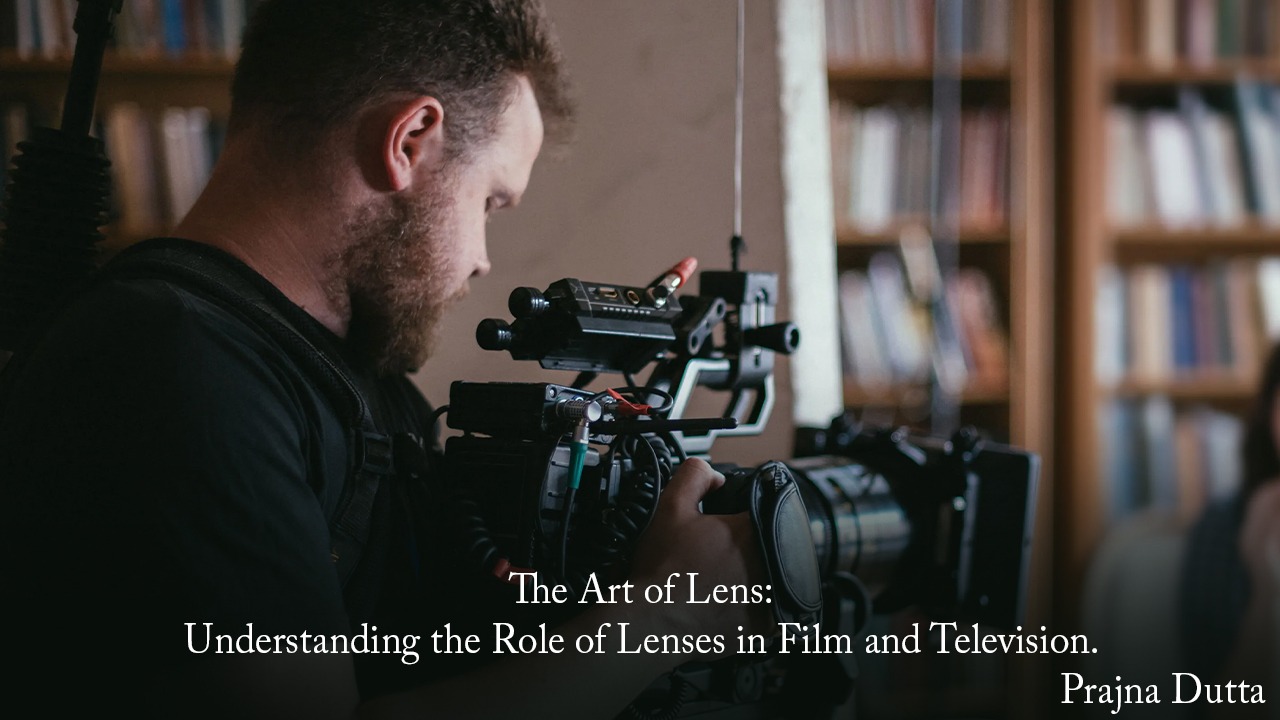Introduction
Lenses are essential tools in the filmmaking process, serving as the eyes of the camera and playing a crucial role in shaping the visual language of a film. From establishing the mood and tone to conveying narrative information, lenses are powerful instruments that filmmakers use to craft compelling visual stories. This article aims to delve into the world of lenses in filmmaking, exploring their significance, types, and impact on the cinematic experience.
The Significance of Lenses in Filmmaking
Lenses are more than just pieces of glass; they are the primary means through which filmmakers capture and manipulate images. The choice of lens can significantly influence the look and feel of a film, affecting aspects such as depth of field, perspective, and visual distortion. By selecting the right lenses, filmmakers can create a specific aesthetic that complements the narrative and enhances the emotional impact of a scene.
Types of Lenses
There are various types of lenses used in filmmaking, each with its unique characteristics and applications.
1. Prime Lenses: Prime lenses have a fixed focal length, meaning they do not zoom in or out. Because of their simpler construction, prime lenses often offer superior image quality and wider apertures, allowing for greater control over depth of field and low-light shooting.
2. Zoom Lenses: Unlike prime lenses, zoom lenses have a variable focal length, allowing filmmakers to adjust the framing without physically moving the camera. While zoom lenses offer versatility and convenience, they may sacrifice some image quality and have narrower maximum apertures compared to prime lenses.
3. Wide-Angle Lenses: Wide-angle lenses have a shorter focal length, enabling them to capture a broader field of view. They are commonly used to emphasize perspective and create a sense of spatial distortion, making them suitable for dynamic, expansive shots.
4. Telephoto Lenses: Telephoto lenses have a longer focal length and are designed to bring distant subjects closer, compressing the perceived distance between objects. These lenses are often used for capturing close-ups, isolating subjects from their surroundings, and achieving a shallow depth of field.
5. Anamorphic Lenses: Anamorphic lenses produce a unique widescreen aspect ratio by horizontally compressing the image during capture and then expanding it during projection. They are prized for their characteristic lens flares, oval-shaped bokeh, and the cinematic look they impart to the visuals.
Impact on Visual Storytelling
The choice of lens can have a profound impact on visual storytelling. For example, a wide-angle lens may be used to convey a character's vulnerability and isolation by distorting the surroundings, while a telephoto lens can create a sense of intimacy and focus on subtle emotional nuances. Furthermore, the use of shallow depth of field achieved with certain lenses can draw the viewer's attention to specific elements within the frame, guiding the narrative and evoking emotional responses.
Lens Characteristics and Aesthetic Qualities
In addition to focal length, lenses exhibit unique characteristics that contribute to the overall aesthetic of a film. Characteristics such as bokeh (the quality of the out-of-focus areas), lens flares, vignetting, and distortion all add to the visual texture of a film. Filmmakers often select lenses based on these characteristics to evoke specific moods, create a sense of nostalgia, or establish a certain visual style.
Technical Considerations
Beyond their creative implications, lenses also necessitate technical considerations such as optical quality, distortion, chromatic aberration, and breathing (the change in framing when focusing) that can impact the overall visual coherence of a film. Understanding these technical aspects is essential for filmmakers to make informed decisions about lens selection and usage.
Lens Selection and Collaboration
The process of selecting lenses for a film involves careful consideration of the story, visual style, and technical requirements. Cinematographers work closely with directors and production designers to determine the most suitable lenses that align with the creative vision of the project. Additionally, collaboration with lens manufacturers and rental houses allows filmmakers to access a wide range of lens options, including vintage lenses, modern cinema lenses, and specialty optics, to achieve the desired look and feel.
Cinematic Traditions and Innovations
The history of cinema is intertwined with the evolution of lens technology. From the classic Hollywood era to the modern digital age, filmmakers have continuously pushed the boundaries of lens design and application to expand the visual language of cinema. Certain lenses, such as the anamorphic lens, have become synonymous with specific cinematic traditions and have been employed to create iconic visual aesthetics.
Furthermore, advancements in lens technology, including the development of high-quality glass and coatings, as well as the introduction of innovative lens designs, have opened up new creative possibilities for filmmakers. Today, the industry offers a wide array of lenses that cater to diverse storytelling needs, from capturing naturalistic documentary footage to achieving fantastical visual effects in science fiction and fantasy films.
The Influence of Digital Imaging
The advent of digital cinematography has revolutionized the way filmmakers approach lens selection and image capture. Digital sensors and cameras have different characteristics compared to traditional film stock, leading to a reevaluation of how lenses interact with digital imaging systems. Cinematographers now have access to a plethora of digital lenses designed specifically for digital cameras, as well as the ability to adapt vintage and modern lenses to digital platforms, offering unprecedented creative flexibility.
Conclusion
Lenses are indispensable tools in the art of filmmaking, exerting a profound influence on the visual storytelling process. Through their unique characteristics and applications, lenses enable filmmakers to shape the mood, tone, and aesthetic qualities of a film, ultimately contributing to the emotional impact and immersive experience of the audience. As technology and creative practices continue to evolve, the role of lenses in filmmaking will undoubtedly undergo further innovation, enriching the cinematic landscape with new visual possibilities and artistic expressions. Understanding the art of lenses in filmmaking is not merely a technical pursuit but a creative endeavor that empowers filmmakers to capture the essence of storytelling through the lens's discerning eye.

Comments